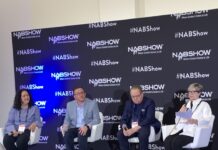
(By Bob McCurdy) Turn on the NCAA tournament this weekend and see ad dollars being wasted as you’re exposed to the same ad from the same advertiser multiple times throughout the evening.
There are a couple of reasons to avoid such concentrated, over-the-top frequency. First and most obvious is that commercials do have a “carryover” impact. The second, and less obvious, is the manner in which consumers process commercials to which they’ve been previously exposed – they begin to “thin-slice.”
Thin-slicing, when applied to marketing, posits that we quickly, consciously or unconsciously, determine if an ad is worthy of our limited cognitive bandwidth. It is about “cutting to the chase.” Each of us thin-slice dozens of times daily, and not just with advertising.
While this type of frequency doesn’t occur in radio, it is possible to generate enough frequency in multi-week campaigns that listeners do begin to thin-slice. It’s helpful to understand this fact and schedule accordingly.
Consumers typically go through a three-stage cognitive process when exposed to radio advertising, often in milliseconds, answering three questions:
- What am I hearing?
- Have I heard it before?
- Do I need to continue listening?
The answer to the last question leads to either continued engagement or immediate disengagement. While total engagement is the goal, it is unrealistic to expect anyone to “experience” a commercial the same way the sixth time as they did the first time. As frequency of message begins to pile up, long-form commercials begin to take on the communicative power of short-form.
We can apply the thin-slicing phenomenon to radio scheduling. If the goal is to generate maximum impact and mental availability for advertisers, it might make sound strategic sense to consider rotating in shorter-form commercials throughout multi-week campaigns, or “sequencing” them as the campaign progresses, starting with long-form and ending with short-form.
These shorter-form commercials could serve multiple purposes, including:
- Extending the duration of the campaign.
- Providing the listener with additional reasons to purchase/believe.
- Protecting/maintaining share of voice.
The takeaway is that there could be a benefit to thinking less linearly when scheduling commercials.
I’ll take this thin-slicing phenomenon in a different direction and apply it to the negativity associated with switching stations during a commercial break, and suggest it just might not be as big of a negative as often perceived, for three reasons:
- The act of physically switching stations requires one to have cognitively registered what they are switching from. I’ll go as far as saying dial switching means attentive listening, which generates an impression, however fleeting, but an impression nonetheless.
- The act of switching stations increases the likelihood that the listener would actually be exposed to more commercials, as the stations to which they are switching might also be programming a commercial break.
- A second or less of audio is capable of communicating a lot. This is particularly true with established advertisers/campaigns.
A while back, Katz commissioned a study to quantify the impact of a few seconds of audio. The goal of the study was to determine how quickly respondents were able to:
1. Recognize brand sounds
2. Correctly associate them with the respective companies/bands
3. Quantify the feelings or emotions that exposure to these short audio signatures incite.
The results were impressive. Eighty-six percent of respondents correctly identified Little Caesar’s after hearing less than a second of audio, with 34% stating that it made them “hungry.” Seventy-nine percent correctly identified Homer Simpson after hearing one three-letter word, with 42% expressing “happiness.” There were other similar examples in the study that confirmed that even a short snippet of audio is capable of providing meaningful marketing impact.
If the MRC can define a banner ad as being “delivered” if 50% of its pixels are visible for one second; count a video ad as being “delivered” if 50% of its pixels are visible for two seconds; and TV can tout that ads fast-forwarded, up to six times the speed of regular TV, have value, then the suggestion that switching stations and being exposed to additional commercials, however fleetingly, is not without some merit.
Bob McCurdy is The Vice President of Sales for The Beasley Media Group and can be reached at [email protected]





